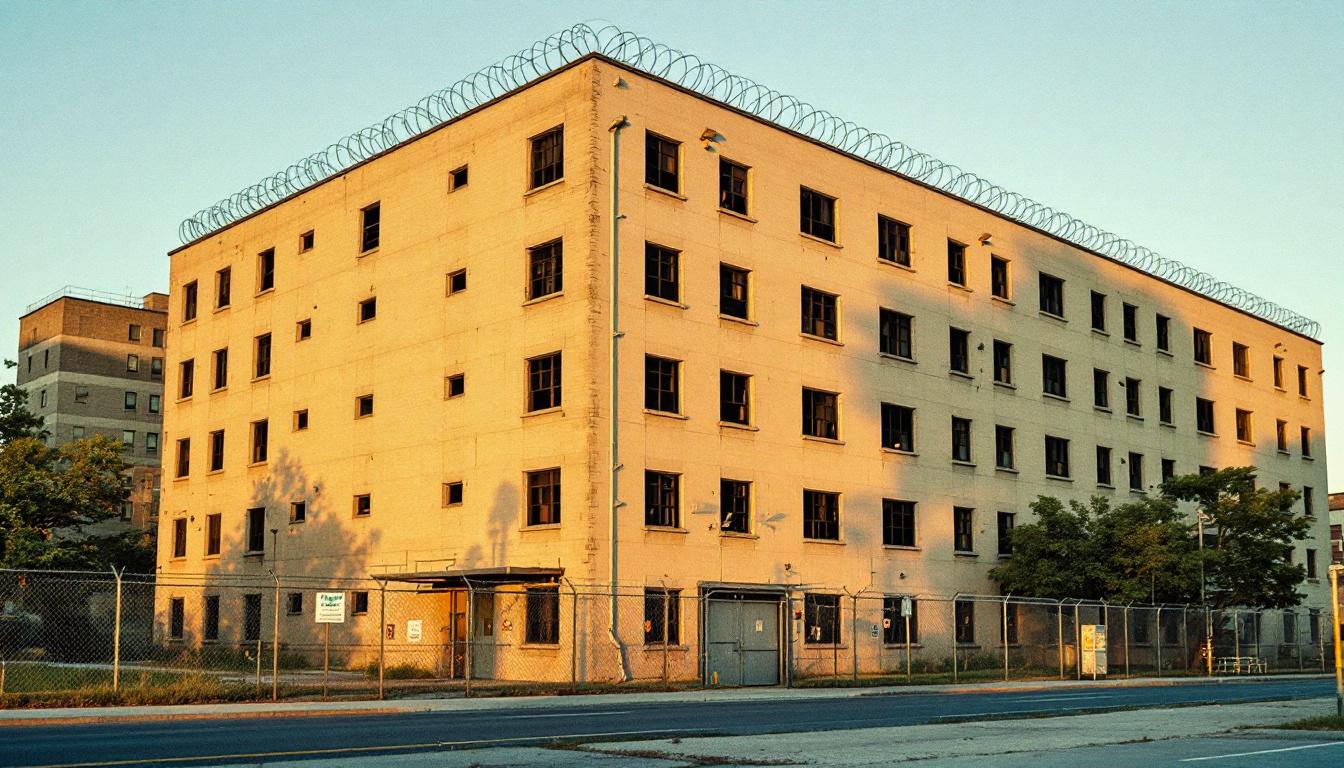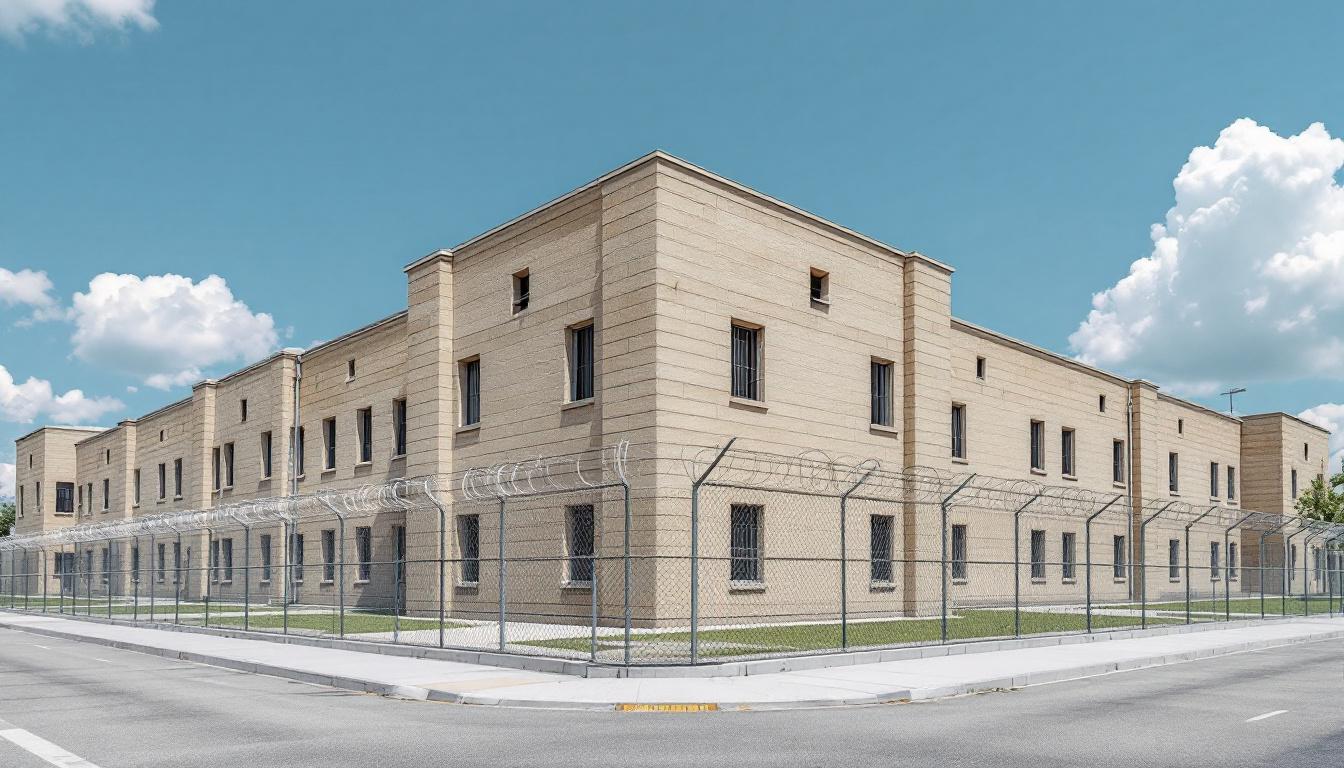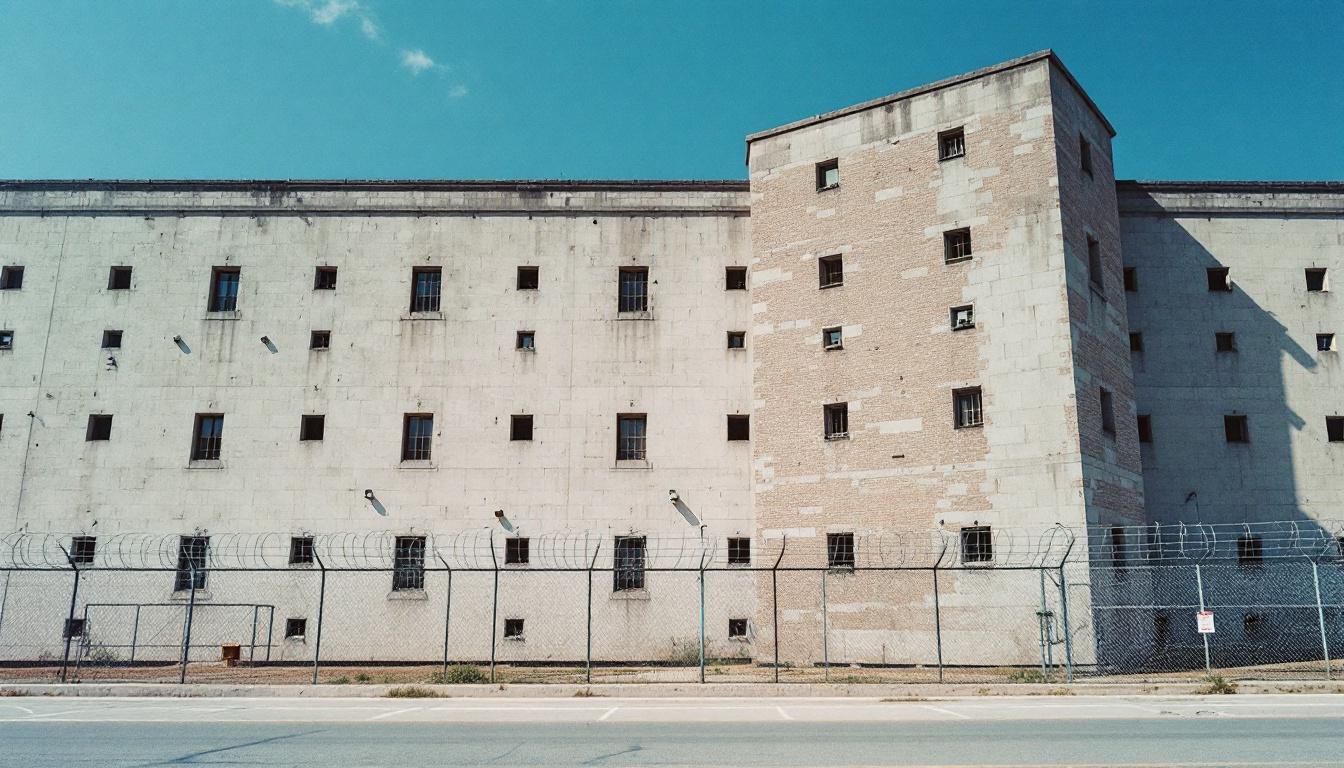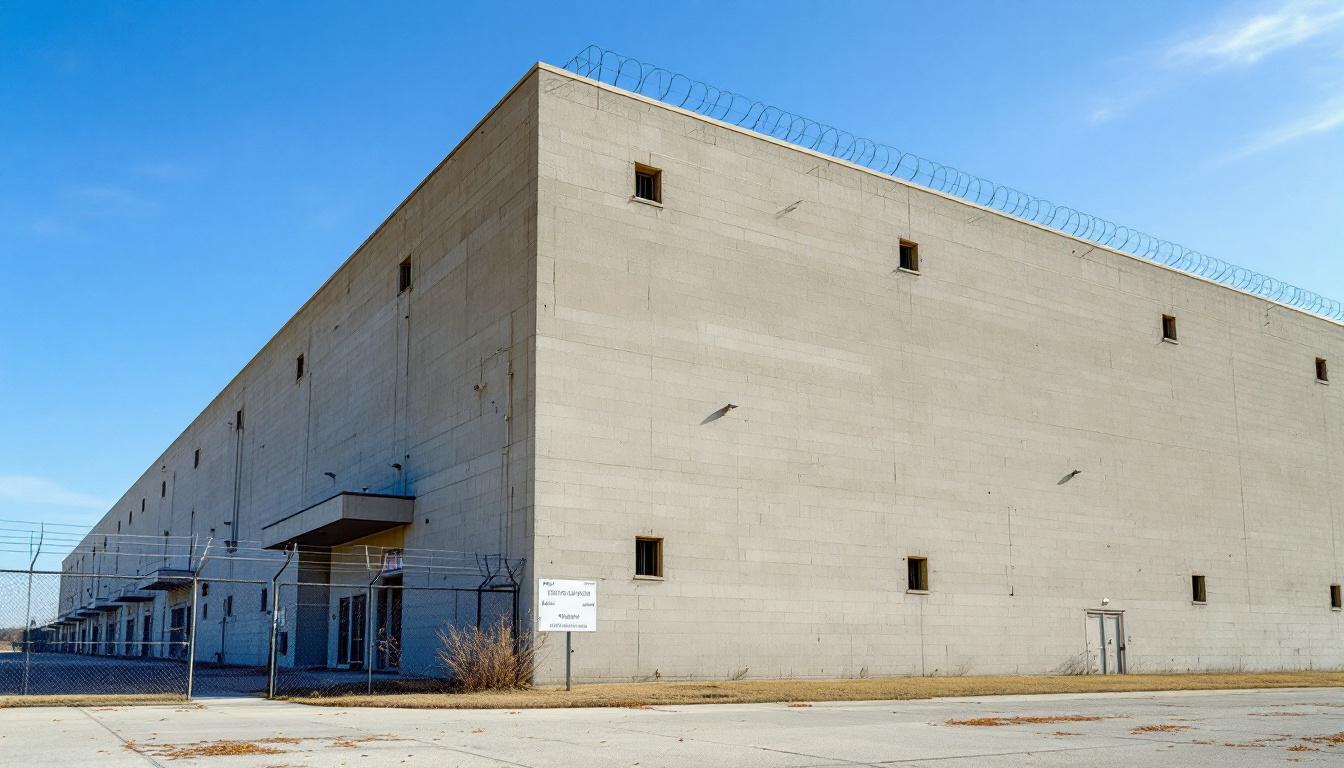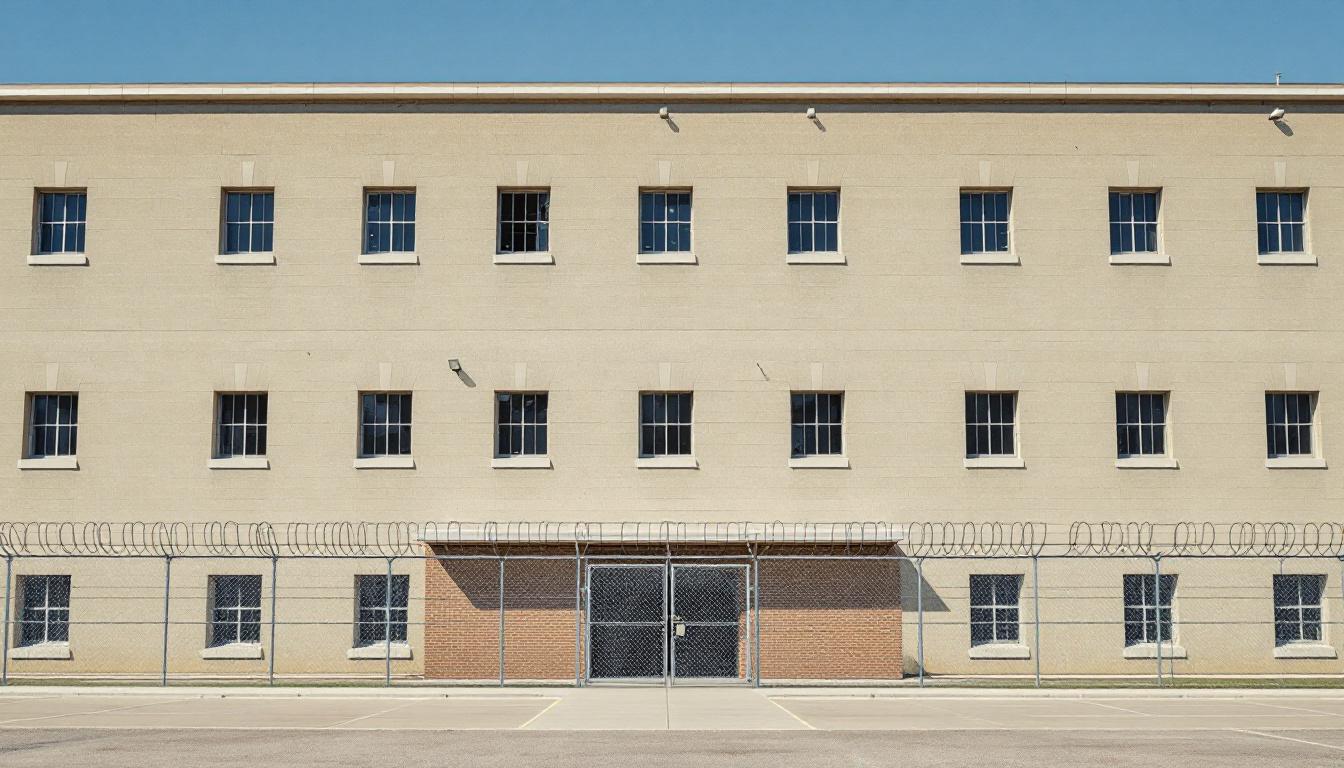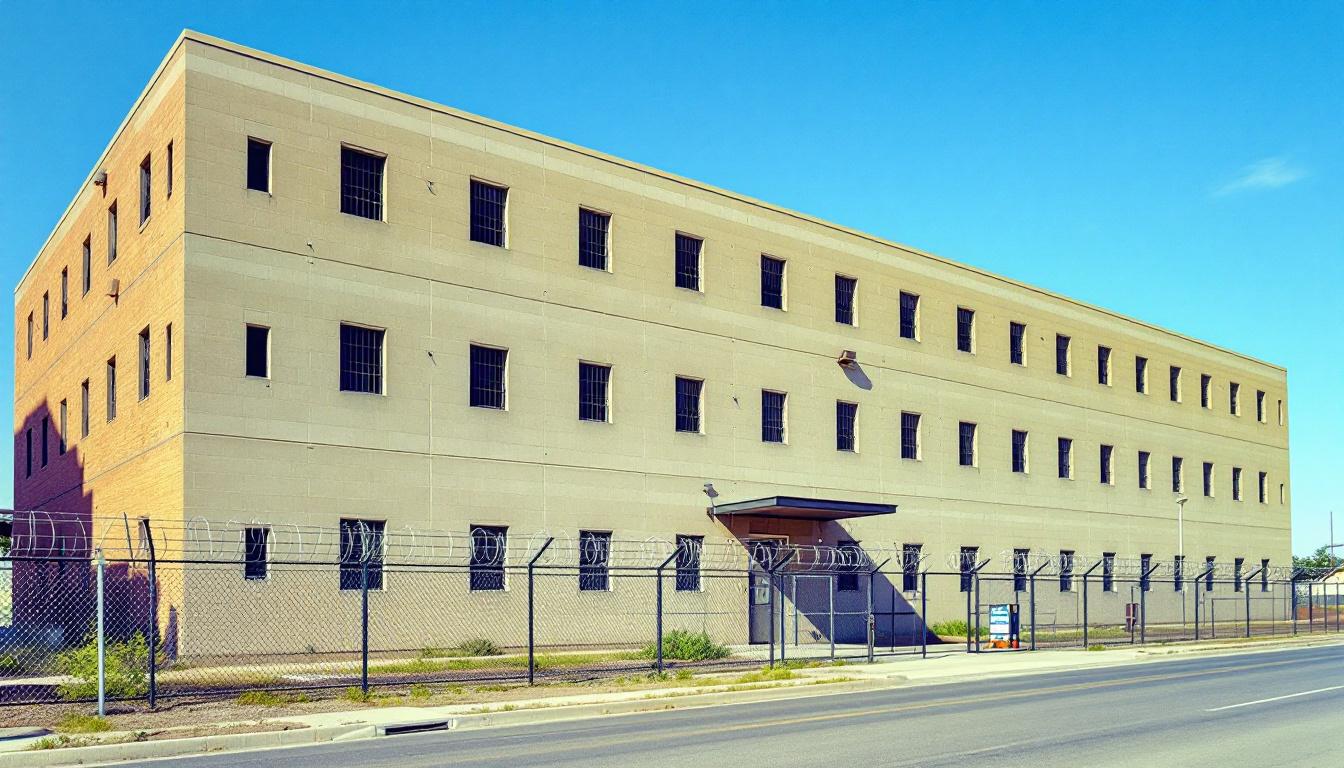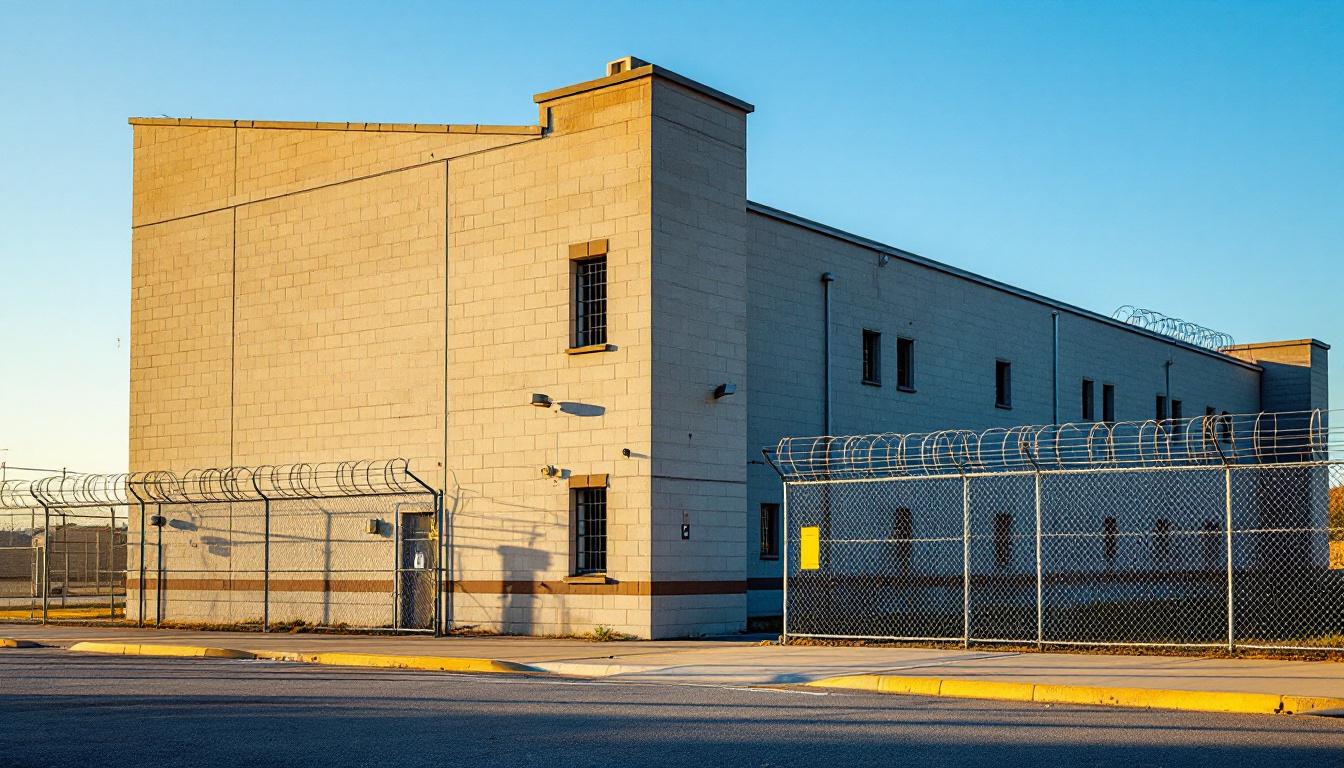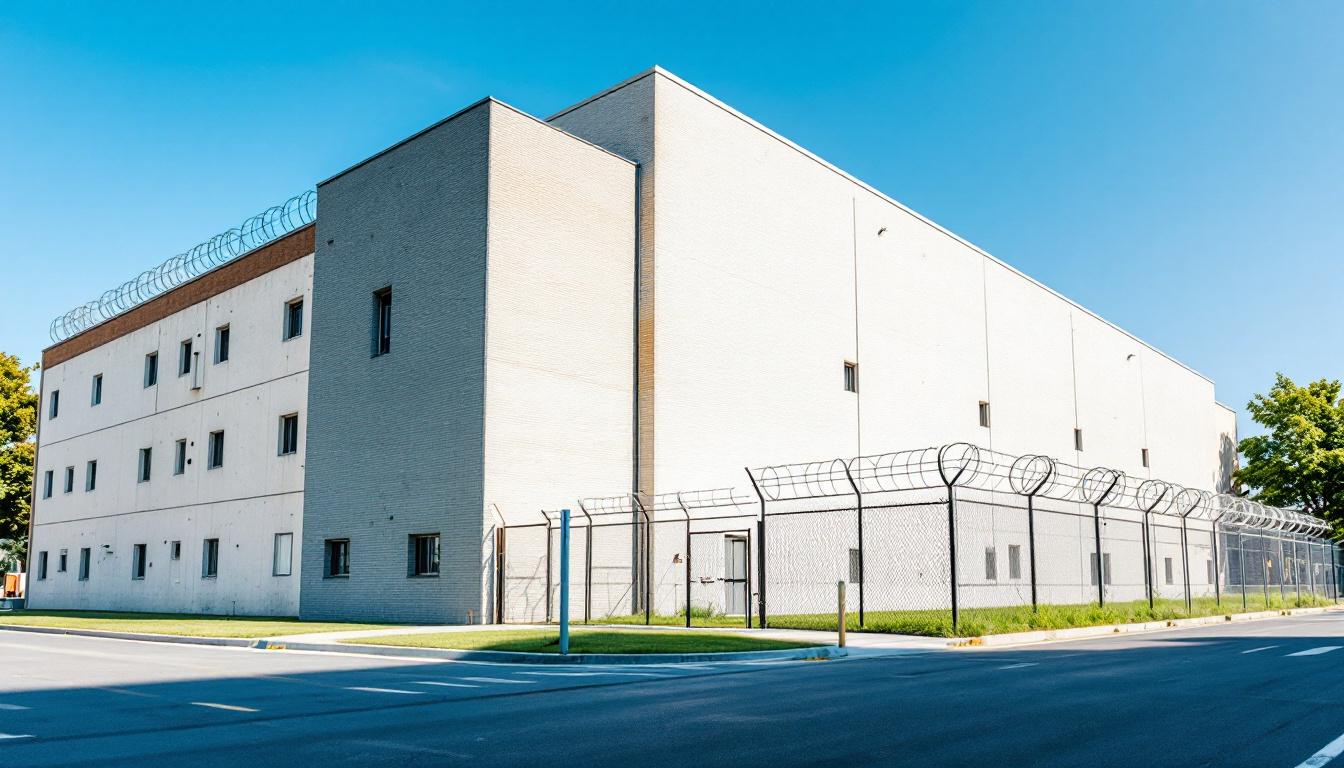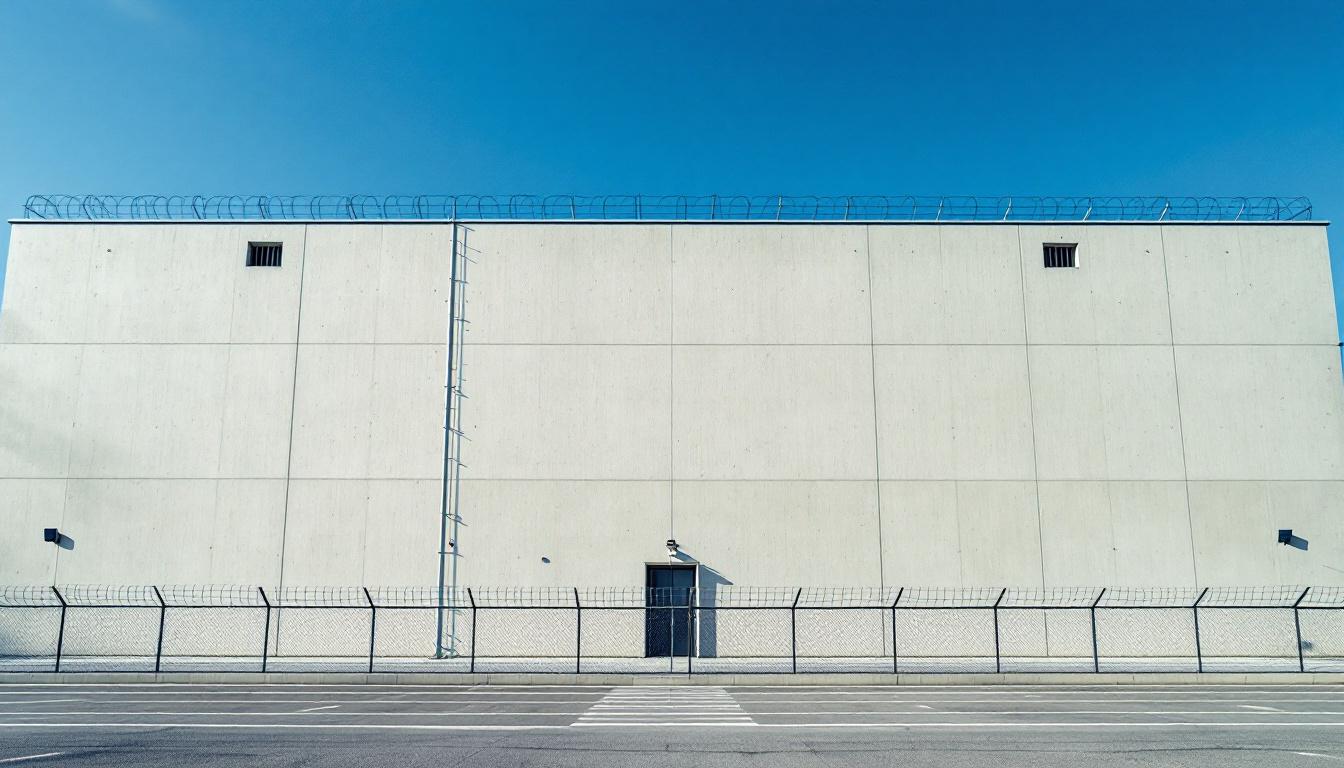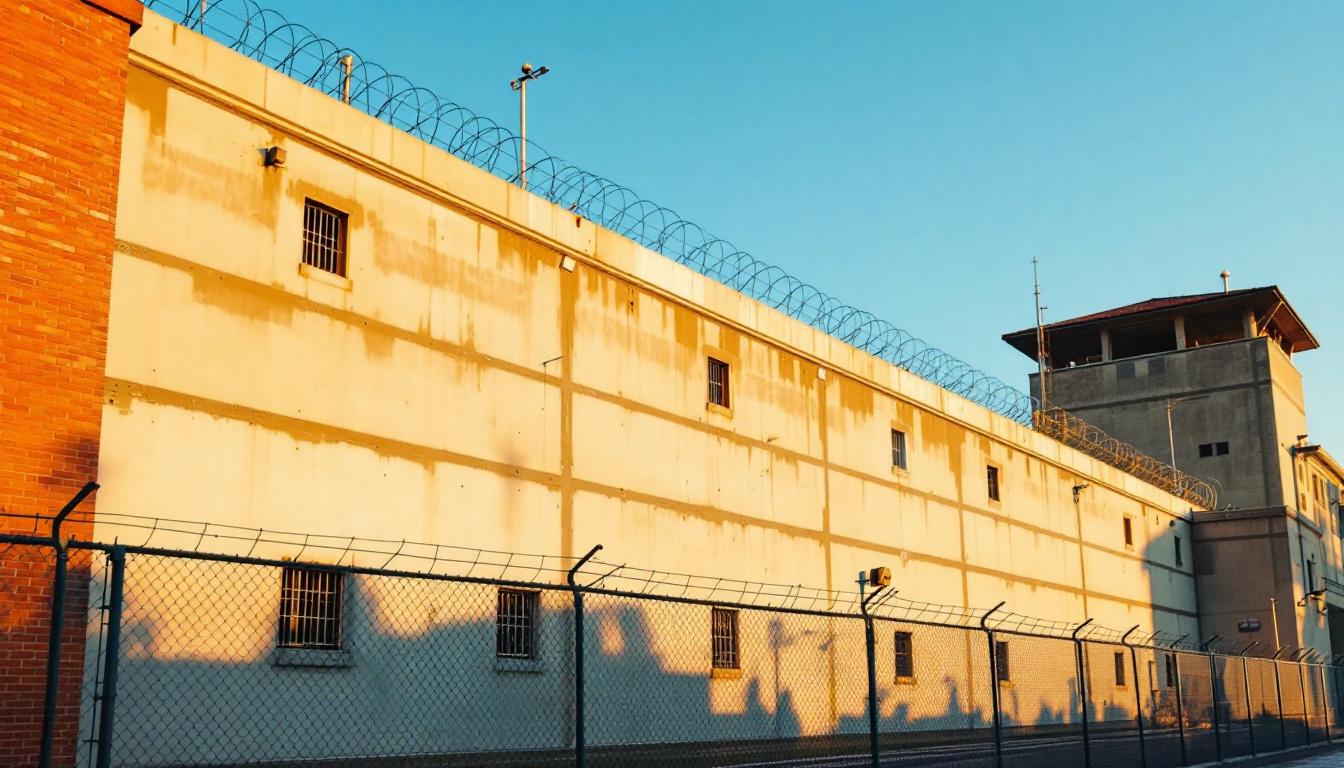
Quick Navigation
How to contact an inmate at J H Lilley Correctional Center
This comprehensive guide will walk you through how to connect with an inmate at J H Lilley Correctional Center. Follow the steps below to find an inmate and send letters and photos:
- Search for the inmate using our search tool below
- Create your account or log in to Penmate
- Write your message (up to 6,000 characters)
- Send instantly - inmates receive printed copies daily
Find an Inmate
Search for an inmate to start communicating today
Tip: You can search by first name, last name, or inmate ID number
To contact a person at J H Lilley Correctional Center start by searching for the person on the official facility website. Perform a search by following these steps:
- Step 1: Enter their first name and last name into the search form and click "Search"
- Step 2: Locate their inmate record
- Step 3: Write down their Inmate ID and any housing information provided
Important! Be sure to enter the person's full name. Nicknames should not be used.
How to Send Messages to Inmates

You can use your phone or computer to send emails, letters, and photos to an inmate. Messages are sent electronically to inmate tablets or kiosks at the facility. If you would like to send a message, start by searching for an inmate at J H Lilley Correctional Center.
Sending Photos and Postcards

A great way to send love and support to a loved one at J H Lilley Correctional Center is to send photos and postcards. It only takes a few minutes to send photos from your phone and it makes a huge difference. You can also mail postcards with words of support and inspiration, or design your own postcard for special moments like birthdays and holidays.
Important! Be sure not to send any explicit photos or they may not be approved by the facility. You can also use a photo printing app like Penmate to make sure your photos are printed at the correct size (4x6 or 3x5) and are mailed according to the rules and regulations of J H Lilley Correctional Center.
Frequently asked questions about J H Lilley Correctional Center
-
How long does it take to deliver a message?
If you're sending an email message your letter is usually delivered within 24-48 hours. For messages sent via mail you should expect delivery within 3-7 days. All messages will need be approved by J H Lilley Correctional Center.
-
How much does it cost to send a message to J H Lilley Correctional Center?
You can send a message free using your phone or mail a message via USPS for the price of a $0.60 stamp and envelope. You can also purchase credits or e-stamps from services starting at $1.99.
-
What services can I use to contact an inmate at J H Lilley Correctional Center?
Penmate
You can use Penmate to send letters and photos to an inmate from your phone. It's an easy way to stay in touch during your loved one's incarceration. Use the inmate locator to find an inmate's location and contact information, then you can send messages within a few minutes.
Securus messaging
Securus may be another option for communicating with an inmate at J H Lilley Correctional Center. You can create a friends and family account and purchase credits to send messages. All messages will be reviewed and must be approved by the facility.
JPay
Some county jails and state prisons may support sending messages with JPay. You must register an account with the system, find your loved one, and purchase stamps to send messages. For some locations you can also attach photos.
Smart Jail Mail
You may also check if Smart Jail Mail is available at J H Lilley Correctional Center. Smart Jail Mail is operated by Smart Communications and has contracted with some state and county jails. After purchasing credits, your messages and photos are sent to the facility, printed out, and then handed out to your loved one.
-
What is the mailing address of J H Lilley Correctional Center?
Mailing address:
J H Lilley Correctional Center
407971 Highway 62E
Boley, OK 74829
Phone: (918) 667-3381 -
What are the visiting hours at J H Lilley Correctional Center?
Visiting hours at J H Lilley Correctional Center vary by housing unit and security level. Generally, visits are scheduled on weekends and holidays, with some facilities offering weekday visits. Contact the facility directly at (918) 667-3381 or check their website for the current visiting schedule. Visits typically last 30-60 minutes and must be scheduled in advance.
-
What items are prohibited when sending mail to J H Lilley Correctional Center?
Prohibited items typically include: cash, personal checks, stamps, stickers, glitter, glue, tape, staples, paperclips, polaroid photos, musical or blank greeting cards, hardcover books, magazines with staples, and any items containing metal or electronics. Only send letters on plain white paper with blue or black ink. Photos must be printed on regular photo paper (no Polaroids). Always check with J H Lilley Correctional Center for their specific mail policies.
-
How do I send money to an inmate at J H Lilley Correctional Center?
You can send money to an inmate at J H Lilley Correctional Center through several methods: 1) Online using JPay, Access Corrections, or the facility's approved vendor, 2) Money orders mailed directly to the facility with the inmate's name and ID number, 3) Kiosks located in the facility lobby, or 4) Over the phone using a credit or debit card. Fees vary by method, typically ranging from $2.95 to $11.95 per transaction.
-
Can I schedule a video visit with an inmate at J H Lilley Correctional Center?
Many facilities now offer video visitation as an alternative to in-person visits. At J H Lilley Correctional Center, video visits may be available through services like Penmate, Securus Video Connect, GTL, or ICSolutions. Video visits typically cost $10-20 for 20-30 minutes and must be scheduled in advance. You'll need a computer or smartphone with a camera and reliable internet connection. Contact the facility for their specific video visitation policies and approved vendors.
-
What identification do I need to visit an inmate at J H Lilley Correctional Center?
All visitors must present valid government-issued photo identification such as a driver's license, state ID, passport, or military ID. Minors must be accompanied by a parent or legal guardian who can provide the minor's birth certificate. Some facilities require visitors to be on the inmate's approved visitation list, which may require a background check. Contact J H Lilley Correctional Center for specific ID requirements and visitor approval procedures.
-
How can I find out an inmate's release date?
To find an inmate's release date at J H Lilley Correctional Center, you can: 1) Use the online inmate search tool if available, 2) Call the facility's records department, 3) Contact the inmate's case manager or counselor, or 4) Have the inmate provide this information during a call or visit. For privacy reasons, some facilities only release this information to immediate family members.
Facility Overview
Contact Information
J H Lilley Correctional Center407971 Highway 62E
Boley, OK 74829
Phone: (918) 667-3381
Official Website
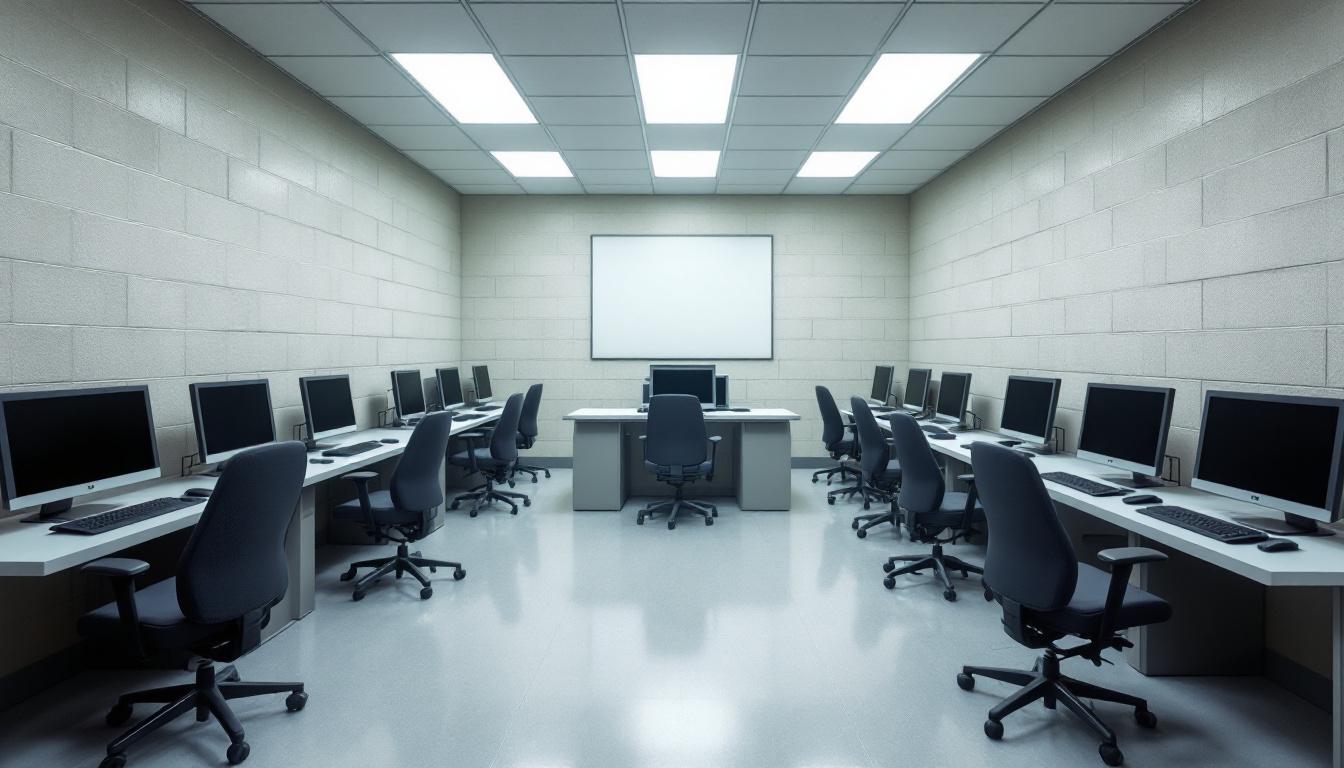
About J H Lilley Correctional Center
Nestled within the rural landscape of Dallas, Oklahoma, the John H. Lilley Correctional Center operates as a medium-security facility serving the state's correctional system with a philosophy centered on structured rehabilitation and community reintegration. This OK correctional facility emphasizes the importance of preparing residents for successful transitions back into society through comprehensive programming that typically addresses educational deficiencies, vocational skill development, and behavioral modification. The facility's operational approach generally focuses on creating pathways for personal growth while maintaining the security standards necessary for public safety.
The center's programming framework often includes partnerships with local educational institutions and community organizations throughout the Dallas area, providing residents services that may encompass literacy improvement, GED preparation, and job readiness training. These collaborative efforts typically extend to substance abuse counseling, mental health support, and life skills development, reflecting the facility's commitment to addressing the underlying factors that contribute to criminal behavior. The correctional facility generally maintains connections with regional employers and social service agencies, creating networks that can support residents both during incarceration and upon release, thereby strengthening the broader rehabilitation process within Oklahoma's correctional system.
Programs & Services
Educational initiatives form the cornerstone of rehabilitation efforts, typically encompassing basic literacy development, GED preparation, and adult education opportunities. These academic foundations may deliver essential skills that residents often need to secure stable employment upon release. Moreover, vocational training initiatives complement educational offerings by providing hands-on experience in trades such as construction, automotive repair, and food service operations, equipping participants with marketable skills for successful community reintegration.
Structured learning environments often include computer literacy courses and life skills development sessions that address practical challenges residents may face during their transition. The educational components typically focus on building confidence and academic competency, while vocational programs may offer certifications in various trades. These initiatives work together to create comprehensive skill-building opportunities that extend beyond traditional classroom settings, helping residents develop both technical abilities and professional work habits.
Support services play a crucial role in addressing the underlying factors that may contribute to recidivism. Faith-based programs often provide spiritual guidance and community connections, while reentry preparation initiatives typically focus on practical planning for housing, employment, and family reunification. Food service operations may serve dual purposes, providing essential nutrition while offering residents valuable work experience in food preparation and kitchen management. These therapeutic and support initiatives often include counseling services and behavioral programs designed to help residents develop healthy coping strategies and decision-making skills for long-term success.
Daily Life & Visitation

Structure defines each moment from wake-up to lights out, creating a predictable framework that residents at John H. Lilley Correctional Center rely upon for stability. Today follows the same carefully organized pattern as yesterday and tomorrow will deliver the same consistency. The routine typically begins with early morning counts, followed by breakfast service in the dining hall, then transitions into work assignments, educational programming, or recreational periods. This structured approach helps residents maintain focus and purpose throughout their incarceration.
Housing units generally accommodate residents in dormitory-style or cell-based arrangements, depending on security classification and facility capacity. Personal belongings may include approved items such as clothing, hygiene products, and limited personal effects that residents can store in designated areas. Meals are typically served at scheduled times in communal dining areas, with menus planned to meet basic nutritional requirements. Moreover, commissary services usually allow residents to purchase additional food items, hygiene products, and other approved goods using funds from their institutional accounts.
Recreational opportunities often include access to outdoor exercise areas, indoor recreation rooms, and organized sports activities during designated periods. Work assignments may involve kitchen duties, maintenance tasks, laundry services, or other facility operations that help residents develop job skills while contributing to daily operations. Whereas recreation delivers physical activity and social interaction, structured programming schedules typically include educational classes, vocational training, or counseling sessions designed to support rehabilitation goals. Family connections remain important through scheduled visitation periods and telephone privileges, allowing residents to maintain relationships with loved ones while serving their sentences.
Ready to Connect?
Start communicating with your loved one today
Search for an Inmate
